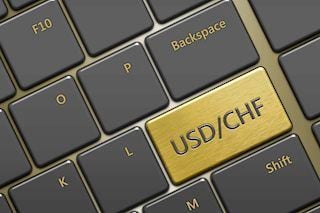USD/CHF remains below 0.8500 as Fed assures policy change in September
|
- USD/CHF steadies below 0.8500 as the Fed looks all set to cut interest rates in September.
- The US Dollar fails to recover strongly despite upbeat US Durable Goods Orders data for July.
- Swiss Q2 Employment Level rose to 5.499 million.
The USD/CHF pair hovers below the psychological resistance of 0.8500 in Monday’s American session. The Swiss Franc asset remains in the bearish trajectory as Federal Reserve (Fed) September interest rate cuts have been fully priced in by market participants, which have weighed on the US Dollar (USD) and have improved the appeal of risky assets.
The S&P 500 opens a bullish note on Monday. The US Dollar Index (DXY), which tracks the Greenback’s value against six major currencies, edges higher from the annual low of 100.53. However, its near-term outlook remains bearish.
The confidence of investors that the Fed will begin reducing interest rates in September increased after the speech from Fed Chair Jerome Powell at the Jackson Hole (JH) Symposium on Friday indicated that the central bank is prepared to pivot to policy normalization. Jerome Powell said, “The time has come for policy to adjust.” Fed officials gear up for cutting interest rates as they worry that downside risks to the United States (US) labor market have increased. While policymakers remain confident that inflation is on track to sustainably return to the desired rate of 2%.
Meanwhile, upbeat US Durable Goods Orders data for July failed to prompt a strong recovery in the US Dollar. New orders for Durable Goods that drive core inflation rose at a robust pace of 9.9% from the estimates of 4%. In June, the economic data contracted sharply by 6.9%.
On the Swiss Franc front, the Q2 Employment Level rose to 5.499 million from the prior release of 5.481 million. Though the labor market swelled, it is less likely to impact market speculation for the continuation of interest rate cuts by the Swiss National Bank (SNB) in September.
Swiss Franc FAQs
The Swiss Franc (CHF) is Switzerland’s official currency. It is among the top ten most traded currencies globally, reaching volumes that well exceed the size of the Swiss economy. Its value is determined by the broad market sentiment, the country’s economic health or action taken by the Swiss National Bank (SNB), among other factors. Between 2011 and 2015, the Swiss Franc was pegged to the Euro (EUR). The peg was abruptly removed, resulting in a more than 20% increase in the Franc’s value, causing a turmoil in markets. Even though the peg isn’t in force anymore, CHF fortunes tend to be highly correlated with the Euro ones due to the high dependency of the Swiss economy on the neighboring Eurozone.
The Swiss Franc (CHF) is considered a safe-haven asset, or a currency that investors tend to buy in times of market stress. This is due to the perceived status of Switzerland in the world: a stable economy, a strong export sector, big central bank reserves or a longstanding political stance towards neutrality in global conflicts make the country’s currency a good choice for investors fleeing from risks. Turbulent times are likely to strengthen CHF value against other currencies that are seen as more risky to invest in.
The Swiss National Bank (SNB) meets four times a year – once every quarter, less than other major central banks – to decide on monetary policy. The bank aims for an annual inflation rate of less than 2%. When inflation is above target or forecasted to be above target in the foreseeable future, the bank will attempt to tame price growth by raising its policy rate. Higher interest rates are generally positive for the Swiss Franc (CHF) as they lead to higher yields, making the country a more attractive place for investors. On the contrary, lower interest rates tend to weaken CHF.
Macroeconomic data releases in Switzerland are key to assessing the state of the economy and can impact the Swiss Franc’s (CHF) valuation. The Swiss economy is broadly stable, but any sudden change in economic growth, inflation, current account or the central bank’s currency reserves have the potential to trigger moves in CHF. Generally, high economic growth, low unemployment and high confidence are good for CHF. Conversely, if economic data points to weakening momentum, CHF is likely to depreciate.
As a small and open economy, Switzerland is heavily dependent on the health of the neighboring Eurozone economies. The broader European Union is Switzerland’s main economic partner and a key political ally, so macroeconomic and monetary policy stability in the Eurozone is essential for Switzerland and, thus, for the Swiss Franc (CHF). With such dependency, some models suggest that the correlation between the fortunes of the Euro (EUR) and the CHF is more than 90%, or close to perfect.
Information on these pages contains forward-looking statements that involve risks and uncertainties. Markets and instruments profiled on this page are for informational purposes only and should not in any way come across as a recommendation to buy or sell in these assets. You should do your own thorough research before making any investment decisions. FXStreet does not in any way guarantee that this information is free from mistakes, errors, or material misstatements. It also does not guarantee that this information is of a timely nature. Investing in Open Markets involves a great deal of risk, including the loss of all or a portion of your investment, as well as emotional distress. All risks, losses and costs associated with investing, including total loss of principal, are your responsibility. The views and opinions expressed in this article are those of the authors and do not necessarily reflect the official policy or position of FXStreet nor its advertisers.